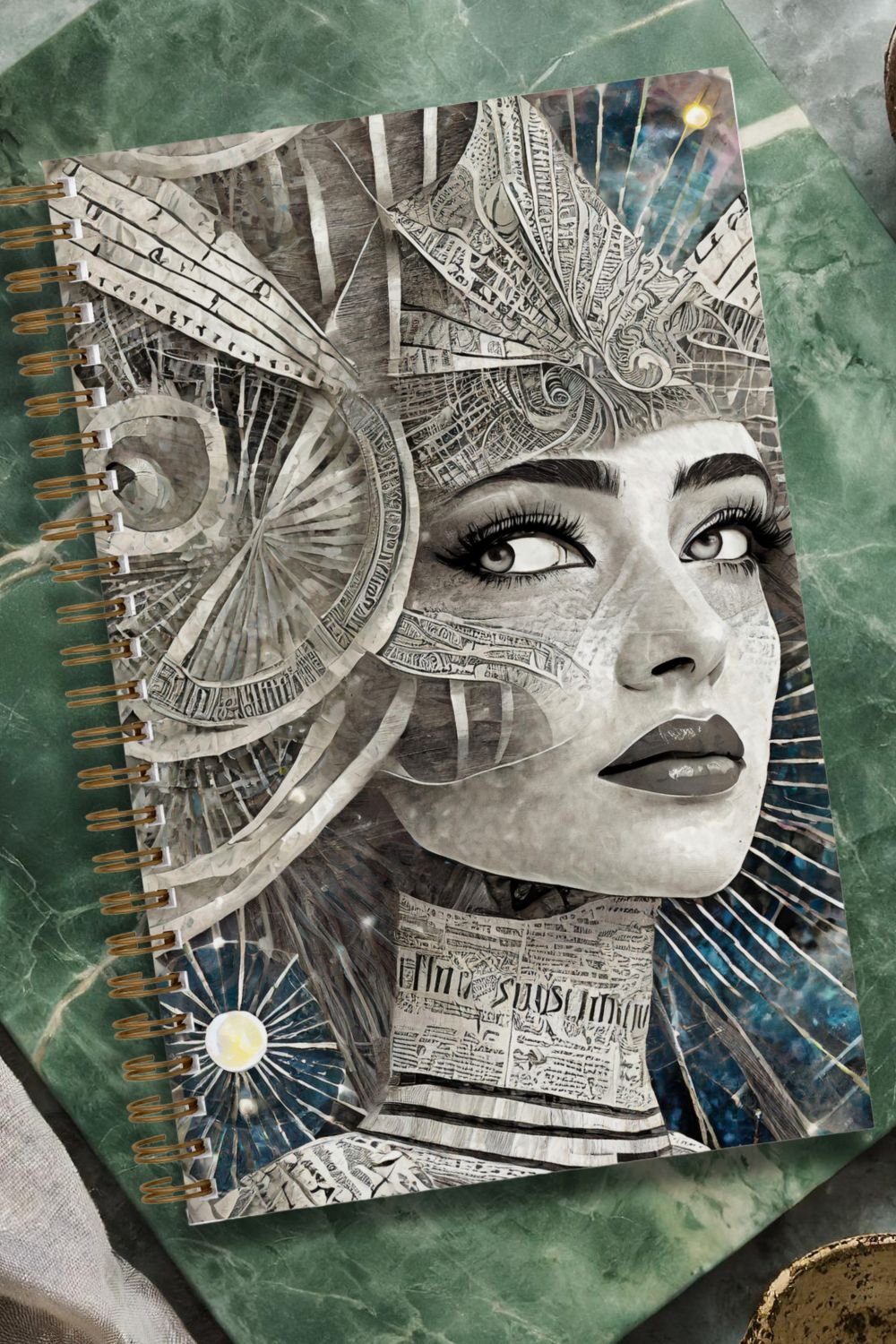What is Active Imagination?: What Active Imagination Can Teach You About You
Learn how to use active imagination to access your shadow self
What is active imagination?
Active imagination is the process of using your imagination to intentionally communicate with deep parts of yourself that are not conscious (things you’re not aware of about yourself). Active imagination is a bit like dreaming, but you’re awake for it. Psychologist Carl Jung was the person who came up with the term “active imagination” to describe this way of working with your unconscious. Jung described different active imagination exercises, but I personally don’t think we’re limited to using the exercises Jung described when using active imagination. After all, as a psychologist, when Jung described active imagination, he was describing something natural about the way the human mind works. When I started to meditate, I found myself doing active imagination exercises without being familiar with the term “active imagination” or much of Jungian psychology. When I learned there was a name for what I was doing, I was so excited!
What’s the point of active imagination?
Using active imagination is a great way to get better at connecting with your intuition. You can read more about the benefits of connecting with your intuition here. Active imagination exercises are a good way to help your conscious and unconscious mind learn how to work together. The better these two parts of you can work together, the more complete, whole, healed, and YOU, you will feel. Active imagination can also be helpful with shadow work; we’ll talk more about that in a bit.
What does Jung say about active imagination?
Jung described active imagination in a really simple, succinct way in a 1947 letter to an individual called Mr. O. It’s a short, easy read and you can read the full letter here. In the letter, Jung essentially says that to use active imagination you start with any image from a dream you had and then you watch it without trying to force it to do anything; at some point, you will notice that this image changes slightly. Pay attention to these changes. Eventually, you “step into the picture” yourself and start talking with the image if it is the kind of image that talks. In this way, you allow your conscious and unconscious mind to communicate and learn how to work together. In Jungian psychology, when your conscious and unconscious mind work together, they help you along the path of individuation (the process of becoming your authenticate, true self).
Active imagination exercises
You can let your imagination lead you to create your own exercises for engaging in active imagination, but when you’re getting started, it might help to have some examples of what active imagination looks like, so here are some ideas.
Active imagination exercise #1 – let your mind float while you watch and wait.
This is the way I started using active imagination, and it’s still my favorite active imagination exercise. This exercise is a little more on the passive side, but I find it keeps my conscious mind (which I’m more familiar with) from overpowering the exercise. To do this active imagination exercise, get relaxed and let your mind wander around. Don’t try to push thoughts out of your mind and don’t try to aggressively follow thoughts that arise; just let everything come and go out of your mind spontaneously as it wants to. Eventually, when you’re relaxed enough, images will float across your mind (a bit like dream images). These could be very faint images or phrases, especially at first. Allow these images to come and go and just observe them. Thoughts may arise about what these images mean, let those thoughts come and go as well. I think of this as dreaming while awake, and while I’m doing this active imagination exercise, I don’t spend a lot of effort trying to understand what any of it means. Afterwards, I will think more about the images and what they might mean. For me, the easiest way to get relaxed enough for images to appear is to lay down with my eyes closed before bed. I’ve found that if I listen to a dream of mine that I’ve described in an audio recording it very quickly gets me in to the right mindset for this to work. However, listening to my recorded dreams also puts me to sleep almost immediately, so there’s always the danger of falling asleep with that method!
Active imagination exercise # 2 – let the lyrics on your mind paint a picture.
When song lyrics pop into your mind, this is your unconscious talking to you! I like to write down the lyrics that come in to my mind next to the day’s date to keep track of them. Writing it down will tell your unconscious, “Hey, I’m listening!” Often the lyrics relate to something I’m processing internally and they express a sort of commentary about what’s going on in my internal world. When lyrics have been on your mind, you can try an active imagination exercise with them, too! Close your eyes, think about the lyrics that have been in your mind and let a picture or story come to mind. What does this story or picture have to tell you about you and your life? You can also try this same exercise by getting relaxed, listening to the song, and seeing what story or pictures come to mind for you. If you want to track the lyrics on your mind so that you can try this active imagination exercise, check out this free printable lyrics tracker.
Active imagination exercise # 3 – choose an image from a dream and watch it.
This is a classic Jungian active imagination exercise. Choose any image from a dream you had and visualize this image. Watch this image and notice any subtle changes in the image. Don’t try to force changes, just let the image sit there and change on its own. Notice these changes. Later, you might reflect on what these changes mean, or you might think about the dream that this image appeared in again and see if you have any new thoughts about it.
Active imagination exercise # 4 – choose an image from a dream and talk to it or interact with it.
Choose an image from a dream you had. Visualize this image and watch it for awhile without trying to influence it in any way. Then, imagine yourself in the picture as well. Start a conversation with this image if it talks, or interact with it in some way (pick it up, touch it, etc.) if it doesn’t talk. As with the last active imagination exercise, afterwards you might reflect on the meaning of this conversation or interaction, or you might think about the dream you took this image from again and see if you have any new insights.
Active imagination exercise # 5 – step in to a daydream you have now, or one of your childhood daydreams.
Daydreaming and fantasizing are part of being human. Pay attention to your daydreams and fantasies because they have meaningful information to convey to you. You can even use your daydreams and fantasies in an active imagination exercise. Get relaxed and start thinking about your daydream. Follow where it leads you, but don’t dismiss it as a meaningless daydream, assume that it has meaningful information to convey to you using the language of symbolism (i.e., don’t take it at face value). Is this daydream changing at all? Has this daydream changed over time? What part of you is having this daydream?
Active imagination exercise # 6 – create a collage, painting, drawing, or other work of art.
Art can be an active imagination exercise, too! Start your collage, painting, drawing, or other work of art with no plan in mind. Try to feel the act of creation instead of thinking it and just see where it goes. When the art feels done, reflect on why you created this particular piece of art. What information does your creation have to convey to you? You can even try laying down, closing your eyes, and visualizing your work of art while you wait for the image to move or transform. You can also try having a conversation with it in your imagination. P.S. Collage is my personal favorite way to do this. If you want some printables you can use for collage, check out the free junk journal printables on the free printables page of this website.
Active imagination exercise # 7 – think of a question and then imagine an older and wiser you in a room.
This is a fun active imagination exercise designed to help you focus on one particular question you have or issue you’re facing. The article here will guide you through this active imagination exercise, but essentially you think of your question or issue and then imagine and older and wiser you in a room. Next, you interpret this scene as if it were a dream full of symbolism responding to your question.
Active imagination exercise # 8 – create blackout poetry.
Blackout poetry (also called found poetry) is a little like collage, but with words. You create a found poem by taking a book page and crossing out words until the words that are left create a poem (or even just a poetical sounding phrase or sentence). Because you’re letting certain words on the page jump out to you, this is a good active imagination exercise that lets your unconscious speak to you. For more information on how to create blackout poetry as an active imagination exercise, check out this article (which also links to free printable book pages you can use for blackout poetry). After you’ve created your poem, reflect on why this is the poem that stood out to you on the page. What does your poem have to say to you?
Understanding the meaning of your active imagination exercises
Understanding the meaning of what you saw in your active imagination exercises is easier if you’ve worked on learning how to interpret dreams; the images (symbols) you see when doing active imagination exercises are a lot like dream symbols. Here are a few resources to help you learn about dream interpretation:
Ultimately, though, active imagination has benefits that go far beyond understanding each symbol in the way we’re accustomed to understanding things. Such understanding isn’t even really possible. Active imagination results in more of a felt experience of knowledge. Nevertheless, working to understand some of the symbolism brought up in active imagination can help us develop a sort of shorthand way for our unconscious and conscious minds to communicate and can therefore help us become more whole, more complete, and bring us closer to our most authentic self.
What is shadow work, and how can active imagination help with shadow work?
Psychologist Carl Jung described the shadow as unconscious aspects of personality. These shadow parts of our personalities are not necessarily good or bad, they are simply parts of who we are that we aren’t aware of. Our shadows are made up of parts of ourselves that we don’t think should be there for whatever reason. Our shadow selves could contain desires we don’t think we should have, emotions we don’t think we should have, and needs we don’t think we should have. The idea that these aspects of our personalities are undesirable might come from childhood, our culture, or significant experiences or relationships in our lives.
Shadow work is work that you do to integrate your shadow self. Shadow work is the process of learning about what your shadow contains and accepting these aspects of yourself as part of the whole that is you (or the “Self” in Jungian terms). Shadow work is the process of bringing personality traits, desires, needs, thoughts, and emotions that were once hidden in the dark into the light. You can read more about what shadow work is here.
Both active imagination and shadow work are all about making what’s unconscious, conscious. When you use active imagination to learn how to allow your unconscious and conscious mind to work together, you’re building a “muscle” that will help with shadow work. Active imagination can also help you bring to light shadow aspects of yourself, so active imagination is itself a form of shadow work.
Resources to learn more about active imagination
Book: Inner Work: Using Dreams and Active Imagination for Personal Growth by Robert A. Johnson
Book: Jung on Active Imagination by C.G. Jung
Podcast: This Jungian Life, Episode 13 – “Active Imagination”
Podcast: Digital Jung, Season 1, Episode 12 – “The Life of Imagination” (This podcast is not expressly about active imagination. It is a great introduction to the role of imagination in our lives and the way imaginative knowing works, which is a helpful foundation for engaging in active imagination exercises.)
Photos for this article were created with Adobe Firefly.











